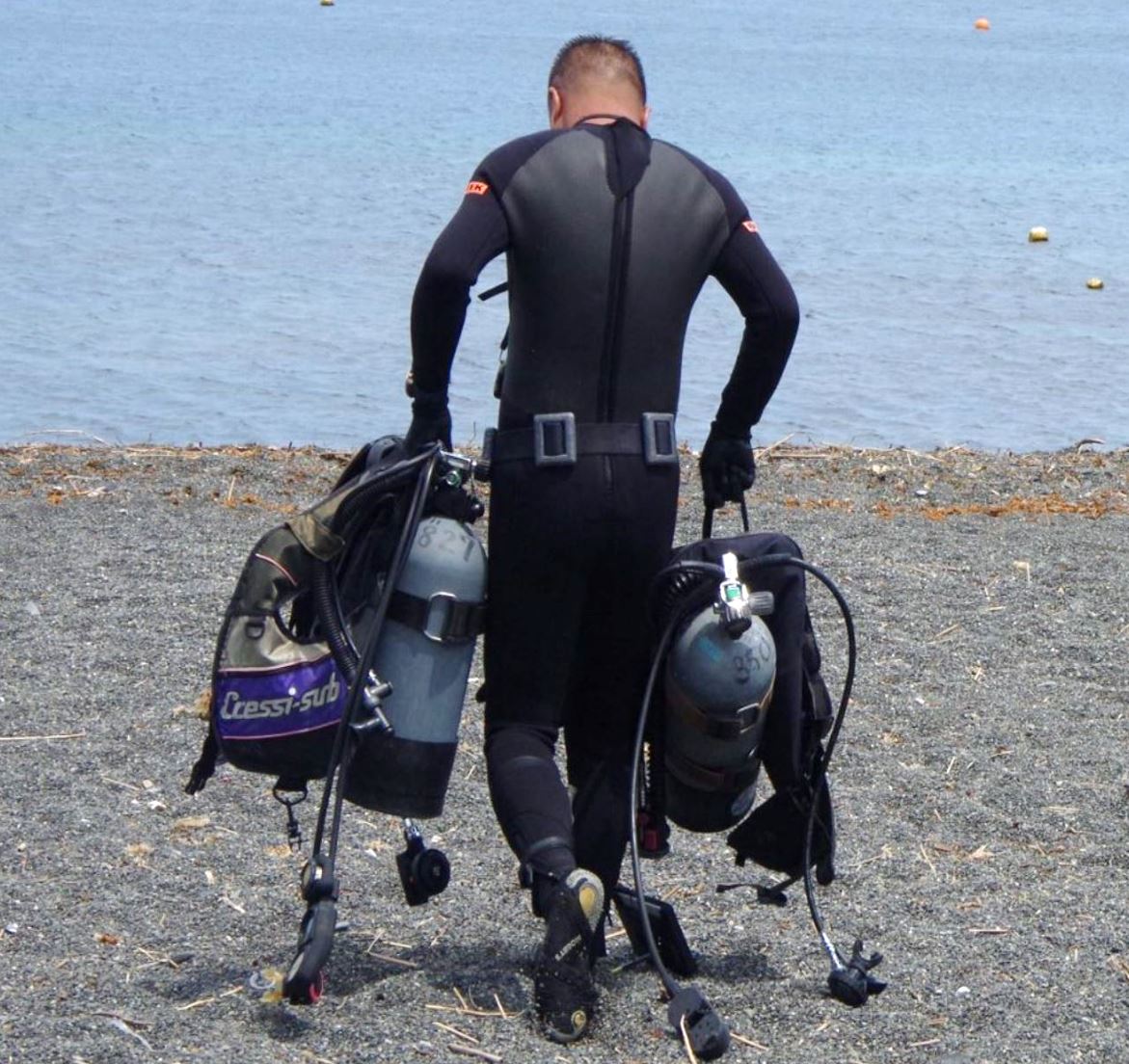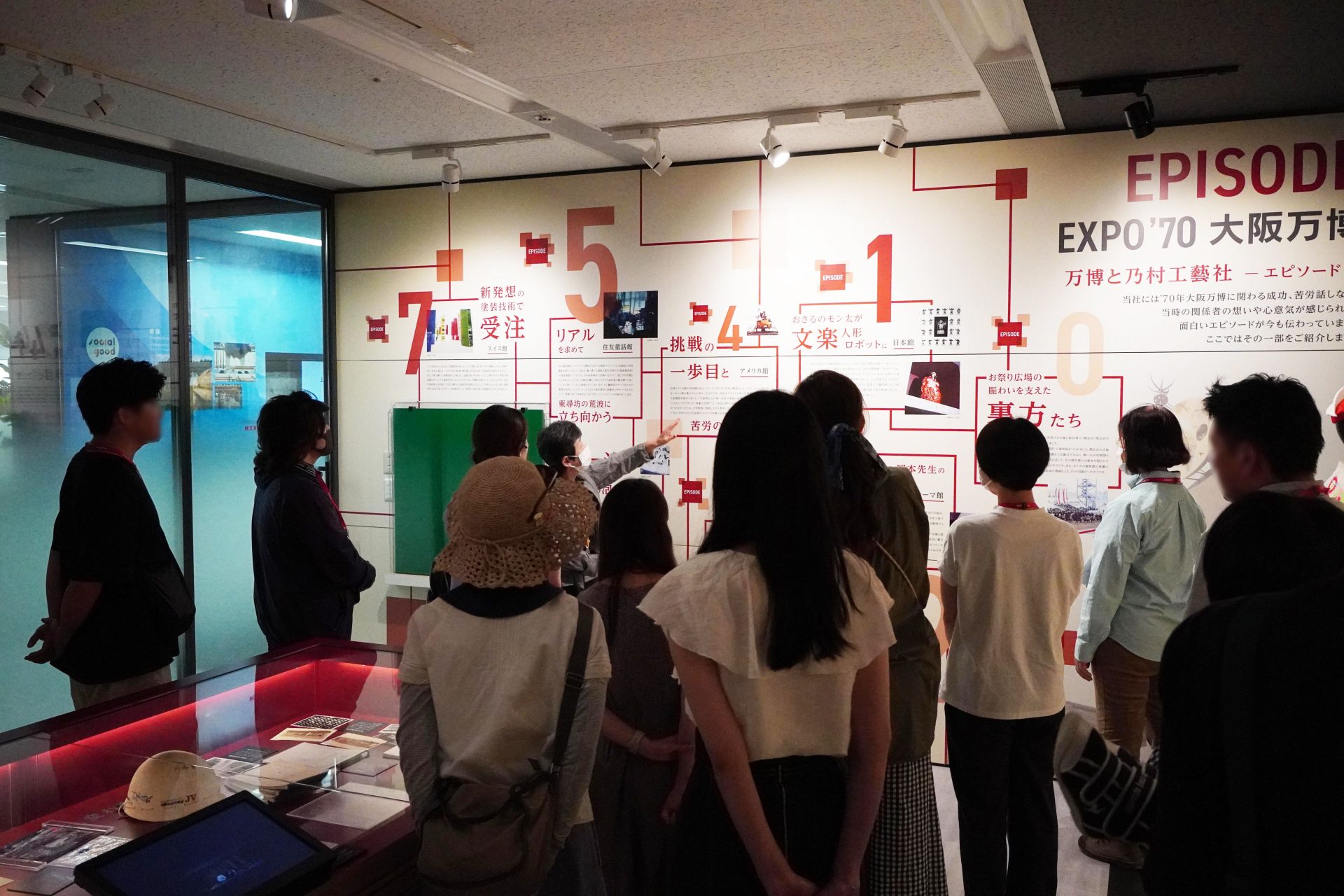- text and edit by
- サトウ ヒデキ
ビーチコーミング
皆さん、こんにちは!
ノムログの箸休めブログ『ゆるゆる渚歩記』をご覧いただきありがとうございます!
お散歩大好き、ヒデキです。
前回紹介した我が家の仔カメたちは、来年の春までベランダで冬眠生活に入りました。カメは冬眠しても『ゆるゆる渚歩記』は、寒い季節も元気に投稿し続けますので、ご愛読よろしくお願いいたします!
さて、“海岸ミュージアム”と題したepisode1では、渚歩きの楽しみ方に加えて、いくつかの“漂着物”を紹介しましたが、その他にも多種多様な漂着物に出会ってきました。
漂着物を観察したり収集したりする行為をビーチコーミング【beach combing】と呼ぶこともあります。【comb】は櫛(くし)のことなので、櫛ですくように海岸でモノを探すという意味なのでしょう。
そんなワタシのビーチコーミングを今回より数回に分けて、趣向やジャンルを変えながら皆さんと一緒に見ていきたいと思います。
題して『渚のコレクション』、まずは【いきもの編】からいってみましょう。
皆さんも ビーチコーミング を楽しむ気分でご覧いただけると嬉しいです。
 ※はい、ワタシの地元・茅ヶ崎の海岸にやってきました。
※はい、ワタシの地元・茅ヶ崎の海岸にやってきました。
緩く弧を描く砂浜に向かって、放射状に漂着物が散らばっているのがわかると思います。
これは、ワタシが勝手に「古い層」と呼ぶ、過去にチェック済の漂着物群が日を経て波によってバラけた状態なので、目新しい発見を望むにはちょっと期待薄なコンディションです。
 ※こちらは、違う日の同じ浜です。
※こちらは、違う日の同じ浜です。
台風や時化(しけ)で海が荒れたあとは、こんなカンジで漂着物がごっそり固まって着浜しています。
「大量入荷!」といったこんな状態の渚は心が躍ります!さっそくお宝を探してみましょう!
渚のコレクション・いきもの図鑑
 ※あった、ありました! きれいな貝殻をいっぱい見つけたよ~
※あった、ありました! きれいな貝殻をいっぱい見つけたよ~
海が荒れたあとは、掘り出し物の貝殻を見つけるチャンスです。
まだ、中身が入ったままのモノも稀にありますが、それは海に還し、空の貝殻を探します。
模様やカタチ、色彩がキレイな貝殻や珍しいモノを見つけると、拾ってコレクションにしています。
我が家の玄関の靴箱の上やおトイレの飾り棚には、そんな貝殻がたくさん陳列されています。
ヤツシロガイ(八代貝)
大きなものはリンゴくらいの存在感のある巻貝で、名前の由来は九州の八代海でよく獲れたからだそうです。砂地に棲み、主にナマコを食べます。貝殻が薄いので、欠けていないものを見つけた時はラッキー!殻に光沢があり、螺旋状に溝が巻く美しい貝です。
カズラガイ(葛貝)
カズラとは葛(クズ)のこと。褐色の縞模様がカズラの根に似ているからだとか。そのシマシマ模様が特徴の美しい巻貝ですが、ウニやヒトデを食べるので臭いがきつく食用には向かないそうです。(私は未食ですが)
ナミマガシワ(波間柏)
牡蠣(カキ)のように岩礁に張り付く二枚貝です。岩についていない片方の殻が剥がれて浜に辿り着きます。カタチは一定ではなく黄色やオレンジ、ピンクなどキレイに発色する一番のお気に入りの貝殻です。小さなナミマガシワがアワビやサザエに付着していることもあります。アワビやサザエを食べる機会があったら探してみてください。
 ※こっちには、ゲンコツのように大きなヤツシロガイが!これはじゃんけんの【グー】だな。あっちには、【チョキ】と【パー】も落ちているぞ!」
※こっちには、ゲンコツのように大きなヤツシロガイが!これはじゃんけんの【グー】だな。あっちには、【チョキ】と【パー】も落ちているぞ!」
ノコギリガザミ(鋸蝤蛑)のハサミ
ワタシの掌と比べてその巨大さがわかるかと思います。人の指の骨など簡単に砕くほどのこのいかついハサミで貝を割って食べます。英名はマッドクラブ(泥蟹)、マングローブガニの異名を持ちます。日本には、アミメ、アカテ、トゲの3種類が生息しますが、あまり差がないため、長い間、同じ種とされていました。味は美味しいそうです、食べてみたい!
モミジガイ(紅葉貝)
貝の名がつきますが、ヒトデの仲間です。体色はブルーグレーやオレンジなど個体で異なり、細かく生えた触手で砂地の上を滑るように素早く動きます。このヒトデのカラダにはフグと同じテトロドトキシンという猛毒があるので、まさかとは思いますが食べないでくださいね。写真のモミジガイはすでに干乾びていました。
 ※今度は、まだ生きている子たちを発見! でも弱っているみたい?
※今度は、まだ生きている子たちを発見! でも弱っているみたい?
安心してください。
少し観察したあとには波に押し戻されてこないよう、ワタシが学生時代に野球やハンドボールで鍛えた自慢の強肩で、遥か沖へと空輸便で海に還してあげます!
アメフラシ
ウミウシやクリオネの近縁種で、殻を持たない貝の仲間です。外敵に襲われたり刺激を受けたりすると紫汁線という器官から粘っこい液体を出してタコの墨のように水中に煙幕を張ります(ワタシの掌に汁を出しやがりました、助けてやったのに!)この煙幕が雨雲の立ち込める姿に似ているので、アメフラシ(雨降らし)の名がついたという説があります。大きいものは30㎝を超えるサイズになります。
ヤドカリ
皆さんもご存じのように、巻貝の空き家に間借りする甲殻類の総称です。世界では約700種、日本では約100種のヤドカリが確認されています。写真のヤドカリは海の中で暮らす水棲種で、陸上では生きられません。海が荒れた後に浜に打ち上げられグッタリしていました。縁日やペットショップで売られているオカヤドカリは陸棲ですが、幼生時は海で成長します。
カブトムシ
森で暮らすカブトムシが海岸に??
多分川の上流部の森林から流されてきたのでしょう。流木につかまったままほとんど動きません。この子も衰弱しているようなので、ウチに連れて帰り、エサを与えて回復してから森に還しましょう。
(※残念ながら回復は叶わず、翌日には星となり天国に旅立ってしまったので土に還してやりました)
 ※「うわーっ! 大量の小魚が浜に打ち上げられている!」
※「うわーっ! 大量の小魚が浜に打ち上げられている!」
煮干しをばら撒いたワケではないんです。
イワシやサバの幼魚などが大量に浜に打ち上げられていることがあります。捕食生物に追われて浅場に逃げてきたのか、赤潮や真水の混入で息絶えたのか、その理由はいろいろ考えられます。「竜巻で空からオタマジャクシが降ってきた」なんてこともあるくらいですから、写真の小魚は果たして…???
 ※”尾頭付きのタイ”らしき魚を発見です!
※”尾頭付きのタイ”らしき魚を発見です!
クロダイ(黒鯛)
湘南には「チヌ」と呼ばれるクロダイと「キビレ」と呼ばれるキチヌの2種類のクロダイがいます。
鰭(ヒレ)が黄色いのが「キビレ」ですが、個体差もあるので、正確に見分けるには側線の上にある鱗(ウロコ)の枚数で違いを見分けます。
写真の魚は側線がハッキリしませんが、鱗の枚数が3~4枚に見えるので「キビレ」のようです。ちなみに「チヌ」は5~6枚です。
貝やカニなどなんでも食べるその歯は、指を噛まれたらヤバそう!
 ※こっちの魚はでっけーな~、ありゃりゃ、カラダが骨になっている魚も!
※こっちの魚はでっけーな~、ありゃりゃ、カラダが骨になっている魚も!
スズキ(鱸)
地方で呼び名は変わりますが、一般的には、大きさによって「セイゴ」「フッコ」「スズキ」と名前を変える“出世魚”として知られており、ルアーフィッシング愛好家からは「シーバス(SEA BASS)」と呼ばれています。スズキやクロダイは縄文時代の貝塚などから骨が見つかっており、大昔から日本人に馴染みの深い魚だったようです。写真のスズキは80㎝以上の大物でした。
コイ(鯉)
おなじみの淡水魚のコイですが、この渚は相模川の河口部なので、そちらから流されてきたのでしょう。ブラックバスや雷魚、ゲンゴロウブナなどの比較的大きな淡水魚の亡骸もよく見かけます。ある程度の大きさがあると他の魚に食べられずに渚に辿り着くのだと考えられます。コイは海水の約1/3の濃度までの塩分濃度の耐性があるそうで、「ほとんど海!」という汽水域を悠々と泳ぐ姿を何度も見ています。
これら浜辺に打ち上げられた魚にトビやカラスなどが群がる光景は珍しくありません。
魚たちの亡骸も決して無駄にはならず、彼らの大事な食糧になっているようです。
 ※もっと大物を見つけました! こいつらはいったいナニモノ?
※もっと大物を見つけました! こいつらはいったいナニモノ?
アカエイ(赤鱏)
東京湾やここ相模湾では、もっともポピュラーなエイかもしれません。ワタシが通う乃村工藝社の本社があるお台場の浜にも座布団大のアカエイがいっぱいいます。しっぽにあるトゲには毒があり刺されると死に至ることがあります。写真のエイはかなり干乾びていますね。陽射しで乾燥してカラカラになっています。でもこんな姿になってもしっぽのトゲには要注意です!
カスザメ(糟鮫)
一見、エイのように見えますが、サメに分類されます。エイとサメは同じ軟骨魚類ですが、その定義はエラ穴が体の側部にあるのがサメ、裏側にあるのがエイ、ここが見分けるポイントです!
カスザメの「カス」は残り物や不要物の意で、「要らない魚」のレッテルを貼られてしまいましたが、実はサメの中で一番美味しいと言われています。また表皮はワサビおろしや刀剣の滑り止めとして柄に巻いたりして利用されています。ちっとも「カス」なんかじゃないのにね。
ドチザメ(奴智鮫)
ドチとはスッポンのこと。頭の形がスッポンに頭部に似ているから。また、動きが鈍く「ドジ」からきているという説もあり。episode1でも紹介しましたが、このサメは浜で見る機会の多いサメです。まさに「鮫!」といった、海の中で出会ったら怖そうなスタイルをしていますが、実はわりと大人しいサメです。
 ※ワタシがビックリした漂着生物たちです ※写真はボカシ処理をしています
※ワタシがビックリした漂着生物たちです ※写真はボカシ処理をしています
アカウミガメ(赤海亀)
湘南海岸の砂浜にもアカウミガメが産卵にくることがあります。神奈川県で年に数件の目撃例があるそうですが、自然環境の変化などで減ってきているようです。写真のウミガメは亡骸で漂着したらしく、息絶えてからかなり時間が経った様子でした。翌日には、また波が連れ去ったのか無くなっていました。
イグアナ?(鬣蜥蜴)
鬣(たてがみ)蜥蜴(トカゲ)と書いてイグアナと読むそうです。
見つけたときはまさかのいきものの亡骸にビックリ!頭からしっぽの先まで1mほどの大きさでした。日本には生息していない生物なので、飼われていたものが逃げて川に流されてきたのか、飼い主が亡骸を海や川に棄てたのか? こればかりは本当に謎です。
現在、沖縄の石垣島では、体長1.5mにまで成長する特定外来生物のグリーンイグアナが大繁殖し問題になっています。
タヌキ?(狸)
この骨には数羽のトビが群がって餌として突いていました。動物の骨格標本の写真やサイズから、タヌキではないかと思われます。以前にも外観でタヌキとハッキリわかる亡骸を見たことがあります。その時は砂をかけて埋めてやりました。街中でも生きたタヌキを何度も見かけています。【けものへん】に【里】で狸ですから、昔から人間の近くに暮らしていたのでしょう。
 ※木の実がたくさんありますね、濡羽色の鳥がこの実を狙っている?
※木の実がたくさんありますね、濡羽色の鳥がこの実を狙っている?
クルミとカラス
クルミを「いきもの」と呼ぶには、少し違和感がありますが、植物の赤ちゃんだと思えばありかな?
細かな流木と共にたくさんみつかります。川の上流部にクルミの樹が多くあるのでしょうね。面白いのはこれを目当てにカラスが集まってくることです。海沿いの遊歩道を歩いているときのこと、空からクルミが落ちてきました。「なんだ、なんだ!」と驚いていたら、カラスが上空からクルミをアスファルトの遊歩道に落として割り、その中の実を食べていました。道路で車に轢かせて割っているのを見たこともあります。本当に賢い生き物だと感じます。
 ※そろそろ日も暮れてきたので、今日はこのへんでおしまいにしましょう。お疲れさまでした!
※そろそろ日も暮れてきたので、今日はこのへんでおしまいにしましょう。お疲れさまでした!
いかがでしたか、渚はチョットした自然系の博物館みたいじゃありませんか?
来る日によって展示コンテンツは変わりますが、「毎日が一期一会の企画展」のようで、飽きずに通う面白さがあります。珍しい展示物に出会うためには“運”に任せるしかありませんが。
次回の『渚のコレクション』は、“人間生活に関わりのあるモノたち”を探りながら、それぞれにまつわる与太話に花を咲かせようと思います。簡単に言うと【浜辺のゴミ】のお話ですけどね。どんな展開になるかは、まだ本人にもわからず…(笑)
(文章&写真 サトウヒデキ)
———————————————————————————————————————-
『ヒデキのゆるゆる渚歩記』 back number はこちら!
ep8 「違和感を探せ!」クイズ編2 ep7「コレなに?」クイズ編 ep6「コロナ禍の浜辺」
ep5「漂着ゴミ図鑑」 ep4「いきもの図鑑」 ep3「自然感察眼」 ep2「ボトルメッセージ」
ep1「海岸ミュージアム」
この記事は気に入りましたか?










